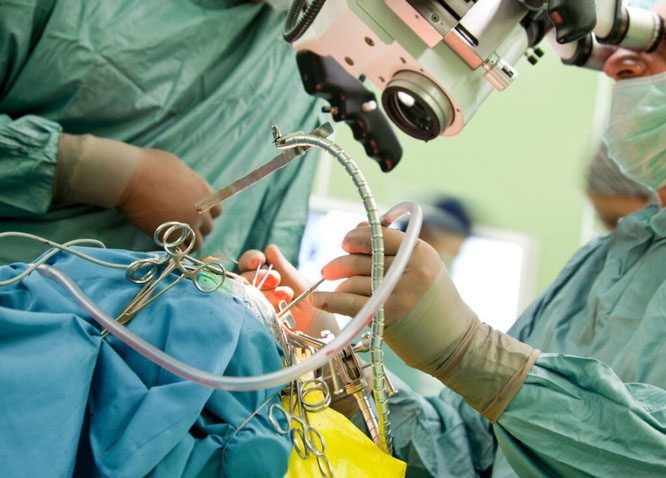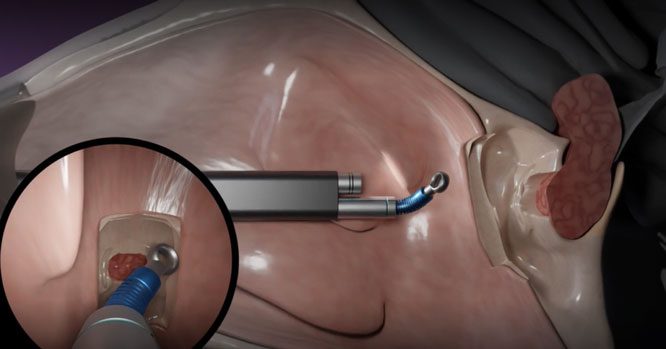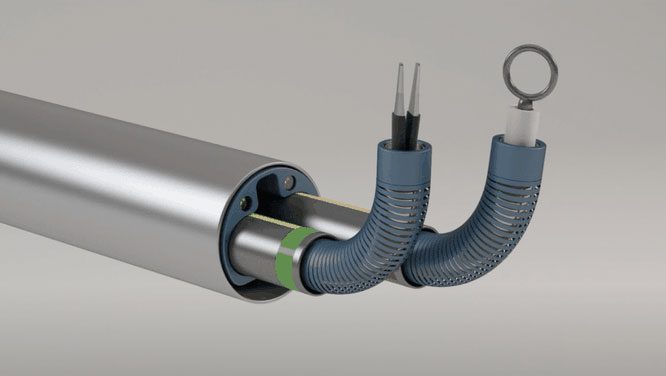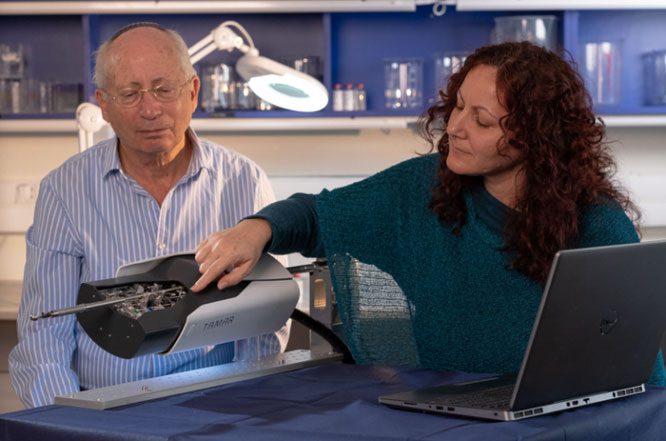An Israeli technology company has developed a small robot, no larger than a pen, but equipped with all the necessary tools that a neurosurgeon needs to operate on patients with brain tumors.

The smallest and most precise robotic endoscopy system in the world for minimally invasive brain surgery. (Photo NoCamels).
The company Tamar Robotics has developed the smallest and most precise robotic system in the world for brain surgery with minimal invasiveness, measuring just 10mm (0.4in) in diameter.
The device is equipped with a camera, two robotic arms that can be controlled and bent, holding classic surgical instruments, and an expandable framework that allows surgeons to easily see and manipulate tools in the workspace at the target site.
This technology company, based near Haifa, was founded by Professor Moshe Shoham, a pioneer in the field of medical robotics. He hopes that this system will be approved for use in hospitals in the United States by 2026.
Every millimeter is carefully calculated when performing surgical procedures on the brain. Neurosurgeons typically have about 1 to 2 inches (25-50mm) of workspace and need to drill large holes in the patient’s skull to accommodate cameras, microscopes, and other tools, ensuring maximum accuracy during surgery.
As neurosurgeons delve deeper into a patient’s brain, the approach to the target tumor becomes increasingly complex, raising the risk of damaging healthy brain tissue. Surgical injuries can lead to various complications such as memory issues, loss of speech, paralysis, seizures, and even death.

Neurosurgeons often have to drill multiple holes in the skull to insert instruments used for brain surgery. (Photo NoCamels)
However, with Tamar Robotics’ surgical device system, surgeons only need to create a single small incision in the skull and a corridor leading to the surgical target, thereby reducing risks and recovery time for patients.
Aaron Feldman, Vice President of Business Development, stated: “Everything is very delicate and tight in the brain; if a doctor moves in the wrong direction, they might remove the tumor, but the patient could lose the ability to speak or walk for the rest of their life.”
“That’s why if a surgeon can reduce the corridor through brain tissue to access the tumor, it makes a significant difference.”

The image shows the Tamar Robotics system used to remove a pituitary tumor via the nose. The circled area shows the view the surgeon sees on the screen. (Photo NoCamels)
The workspace at the target site is crucial in determining the survival of patients undergoing neurosurgery. Using the Tamar Robotics system, all the tools required by the surgeon are accessed from the same position, thus eliminating the risk of them colliding during the operation.
Today, surgeons insert their instruments through the same large incision or multiple incisions to perform surgery. If they want enough maneuvering space and good visibility, they need to create a wider corridor in the brain tissue. This action increases the risk of injury.
Conversely, if they wish to protect healthy brain tissue and open a corridor in a smaller area of the brain, the limitations in maneuvering instruments and visibility may prevent the surgeon from removing the entire tumor in many cases, necessitating further surgery for the patient.

Brain scan showing the progression of a cancerous tumor over a period of 10 weeks. (Photo Wikimedia Commons).
“In both cases, surgeons face the same problem,” Feldman explained. “The tools will collide with the camera, requiring the surgeon to create a large corridor to accommodate both the camera and the surgical instruments. With our system, the surgeon has the camera and tools in front. This means that the surgeon does not need to create such a large corridor and can maneuver the instruments freely while maintaining excellent visibility. Our robotic device provides the best of both worlds, flexible tool usage and great observation.”

Illustration of the endoscopic system and its two robotic arms. (Photo NoCamels).
In its first product, the company focuses on brain surgery procedures but is also developing spinal surgery technology for tumor removal, as well as head and neck surgery to address thyroid and laryngeal cancers.
In the future, the company plans to develop tools for other surgeries, including lung, bladder, and prostate cancer surgeries.
The company will begin testing its robot on cadavers by the end of 2023, followed by initial trials on human volunteers.

The company will start testing its robot on cadavers at the end of 2023 and then proceed with initial studies on human volunteers. (Photo Robina Weermeijer / Unsplash).
At the same time, the company aims to reduce the robot’s size to just 6mm in diameter.
The robot first performed single-port surgery, also known as surgery through a single incision, in 2018. Today, robots are used in many medical centers for surgeries in the ear, nose, and throat.
Robotic device for brain surgery. (Video Tamar Robotics)
Other technology companies are also developing robots for single-port brain surgery, but none have created a robot as small as Tamar Robotics. Their most competitive device is still over 50% larger, at 15mm.

The co-founders of Tamar Robotics, Professor Moshe Shoham and Hadas Ziso (CTO). (Photo NoCamels).
Professor Moshe Shoham, a mechanical engineering professor at the Technion Institute of Technology in Haifa, previously founded a company called Mazor Robotics, which produces robotic positioning systems for spinal surgery. This company was acquired by the multinational medical device company Medtronic for $1.65 billion in 2018.
He has also established several other companies in the field of medical robotics, including Diagnostic Robot and Vision Robot.
- A house that requires no bricks or mortar: 99% patched together from newspapers, still looks the same after 100 years
- Successful testing of non-radioactive nuclear fusion technology, energy sufficient to power Earth for over 100,000 years
- The disaster following the historic earthquake in Turkey: Millions of caterpillars invade, images that send chills down everyone’s spine




















































